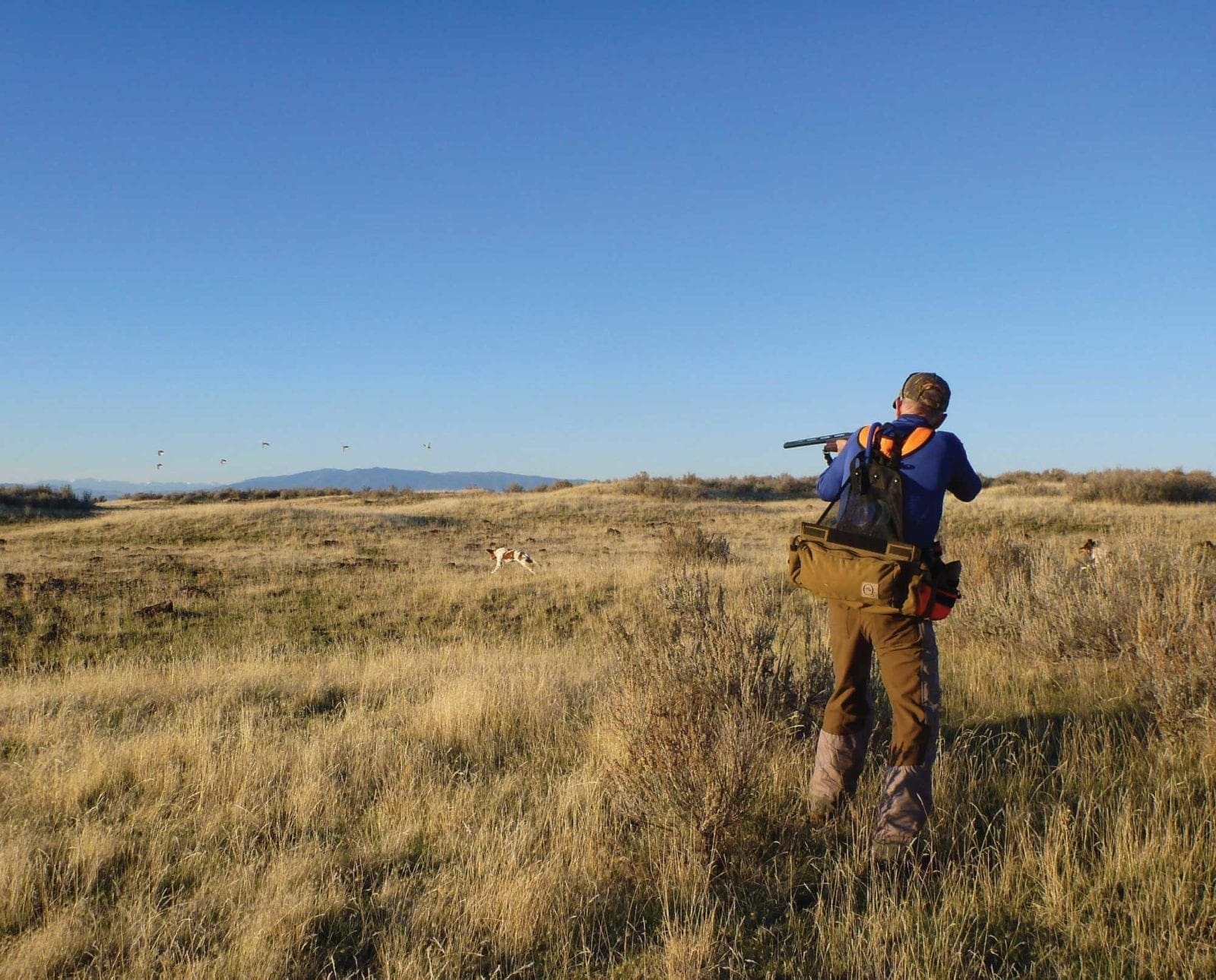Home » Partridge Species » Chukar Hunting » Three Reasons to Try Chukar Hunting
Three Reasons to Try Chukar Hunting

Bob McMichael is a high school English teacher, professional bagpiper,…
Trying out chukar hunting could be your next public land adventure
You’ve heard the rumors. You’ve heard that it’s good cardio, that it’s transformative. We’ve all seen the bumper sticker, “Real men hunt chukar.” Your friend from Idaho says, “It’s a culture unto itself.” Your therapist equates chukar hunting with insanity.
It’s all true. Still, for the sane person, chukar hunting can be a good idea. Here are three reasons why:
- You don’t need anyone’s permission. Chukar live on public land. They also live on private land. They’re honeybadgerish on this point. But these red-legged devils occupy some of the most “useless” land in the world, which might explain why much of it is public: hot, dry, steep, rocky. Sometimes you’ll find cattle on this land, but I wouldn’t want to eat that sinewy, lopsided beef. Idaho, Nevada, eastern Oregon, Washington, and Wyoming have hundreds of thousands—if not millions—of BLM and US Forest Service land that anyone can use. And chukar call home.
- There’s no bigger adrenaline rush for a bird hunter. It’s kind of like buck fever, or the crescendo of anticipation you get while watching your small dry fly meander its way toward a huge trout. Kind of. But there are the added components. Working with a gifted pointing dog. Working your ass off to get in position on a point. Not knowing where the chukar will fly from (or where in the hell they might go). Harnessing your wits and shooting technique to hit–or more often miss–the most elusive game bird in North America. The only exception is the Himalayan Snow Cock, which three people on the planet have seen (with binoculars). Chukar hunting is the epitome of fair chase, but the odds drastically favor the birds. So when you succeed, you’ve earned that beer.
- They’re tasty. For a bird that lives in such harsh terrain, chukar taste good. The ample breast meat is mild and white, looking and tasting much like a Cornish game hen. The legs are dark but have a decent amount of fat in them. They’re good in a slow cooker stew, smoked, or prepared like hot wings. I think chukar are best aged a week or two, but when you do enjoy a meal of this noble bird, knowing what went into bagging it will make it taste even better.
There are lots more reasons to hunt chukar. Of course with all types of hunting, it’s could just be a personal thing. But you’re not chukar hunting on a game farm, even if you’re shooting chukar. It’s the habitat that ultimately makes it what it is. That’s the beauty of chukar hunting: being able to do it without asking permission, using your body and mind and beloved bird dog in concert. And celebrating with a delicious meal of the hard-earned prey.
Bob McMichael is a high school English teacher, professional bagpiper, micronanobrewer, and writer with an Ivy League doctorate. He lives near Hells Canyon, in Idaho, where he, his wife, and two Brittanys chase chukar and other upland game at every opportunity. His blog, chukarculture.com, features gear reviews, recipes, photos, videos, hunting accounts, and an online shop.




The fact that chukar hunting on public land is actually good is huge!
My California bird hunting friends and I pass through Idaho enroute to Montana (sharptails and huns). It has occured to us that Idaho is: 1. closer, 2. has chukar. We regularly hunt chukar on Nevada,BLM and would love to hunt Idaho, but we are at a loss for basic info. like genral areas to get started. Would you share some idea of where we might start learning Idaho chukar/hun/quail hunting ?
Hey Dan!
We are working to expand projectupland.com to start accommodating such questions for all parts of the country. Due to the size of the task at hand, it will be a slow but steady flow of building DIY destination type content. I cannot tell you exactly when but eventually that exact question will be answered. Thank you for the interest!
haven’t been doing it for long and do it primarily for the dogs – perhaps the best training opportunities they ever get, plus the huns that are often found in the same areas – love it when we can find them on terrain as flat as that pictured here